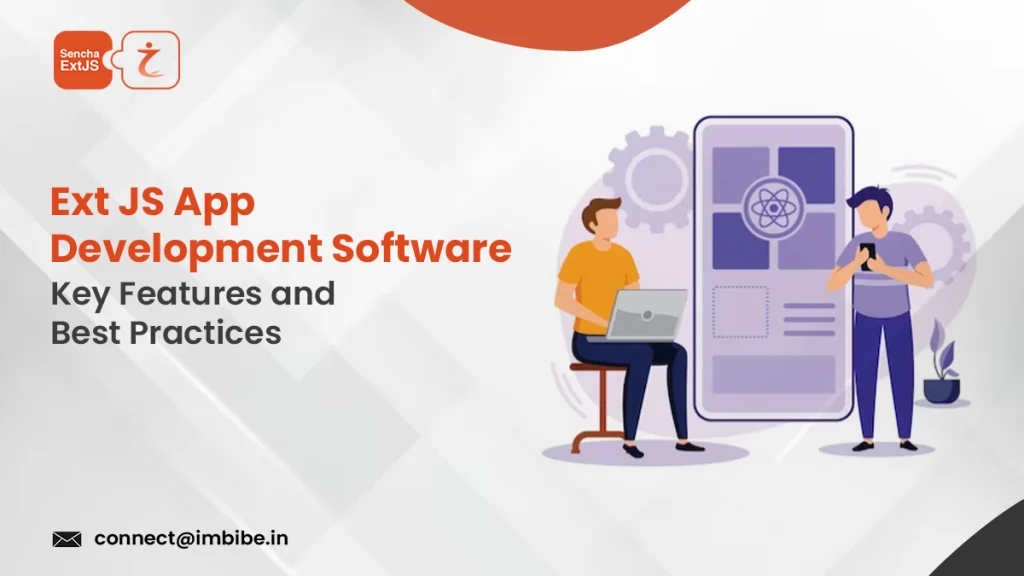In today’s fast-paced digital world, web developers need tools that make building apps easier. ExtJS, developed by Sencha, is a powerful JavaScript framework. It helps developers create fast, modern, and scalable web applications.
In this blog, we will discuss the main key features of Ext JS, tips to improve performance and best practices for development. We will discuss how to enhance your application look with Ext JS themes and where to Buy extjs themes.

Understanding Ext JS – JavaScript Framework for Web Apps
Javascript framework Ext JS allows developers to make advanced web applications and it is ideal for enterprise level single page applications which often have complex user interfaces.
Ext JS provides all in one solution as compared to other frameworks. Ext JS includes UI components, data tools and client side logic.
For example, the grid component displays data in tables. Without extra code users can sort, filter and run over information. To change the design, developers can use ExtJS themes. If you want ready made options to save time and maintain a design you can Buy extjs themes.
Key Features of Ext JS for Web Development
Here are some of the features of Ext JS that make it useful for developers. These features simplify building apps and improve performance.
1. Powerful UI Components
A wide range of pre-built UI components are provided by Ext JS which includes grids, forms, menus, charts and trees. Also, each component has features including sorting, filtering and run over.
For example, the chart allows components for easy creation of graphs. By using ExtJS themes you can make components according to your brand style. This gives the professional look and saves time as well.
2. Robust Architecture
Ext JS uses a flexible structure. It follows the MVC (Model-View-Controller) or MVVM (Model-View-ViewModel) design pattern. This separates data, UI, and application logic.
Apps become easier to maintain and scale. It also supports two way data binding which means when data changes the UI updates automatically. By this way development becomes easier and reduces errors.
3. Performance Optimization
Performance is essential in modern web appsFeatures like lazy loading and virtual scrolling are included in Ext JS which reduces the loads on the web by loading only required components.
Partial data loads can be performed by data stores. That’s why apps with large databases remain fast and the virtual DOM also improves speed. The features make sure that the web apps are working smoothly and responsive.
4. Cross-Browser and Cross-Platform Support
Ext JS works on all major browsers, including Chrome, Firefox, Safari, and Edge. It also supports mobile devices and desktops.
Apps built with Ext JS automatically adjust to different screen sizes. This ensures a consistent user experience. Therefore, users can access your app from any device without issues.
5. Theming and Customization
For branding design is essential. Ext JS helps customers create custom themes and you can modify individual components including buttons, grid and forms.
You can make your app attractive by using ExtJS themes or you can buy extjs themes for faster results which offers ready made designs. This helps save time and make sure of the look across your app.
Best Practices for Ext JS App Development
To build better apps follow the best practices which will help the developers. Here are some of the best practices recommended:
1. Use MVC or MVVM Architecture
Make sure to structure your app with MVC or MVVM as it separates data, UI and logic. This will help you maintain and scale your app easily.
2. Leverage Data Stores
Ext JS data stores handle large datasets efficiently. It improves performance with built- in paging, sorting and filtering and reduces client side load and speeds up the app.
3. Use Modular Code
To keep your project organized use modular code, it allows many developers to work on different components easily.
4. Optimize Performance
To improve speed use lazy loading and virtual scrolling, only load components when needed. This will reduce your processing time and also enhance the user experience.
5. Follow Theming Guidelines
Follow the Ext JS rules while creating custom themes, it will ensure consistency across your app. To simplify your work you can also use ExJS themes or Buy extjs themes.
6. Use Community Support
Ext JS has strong documentation and an active developer community. Use forums and resources to solve issues quickly. This improves productivity and reduces learning time.
Future of Ext JS
Ext JS continues to evolve. Here are some trends:
- Regular Updates: Ext JS follows modern web standards. This ensures better performance and browser support.
- Integration with Other Frameworks: Combining Ext JS with React or Angular adds flexibility.
- Mobile and Cross-Platform Focus: Apps work well on any device due to responsive layouts.
Ext JS is likely to remain popular for building scalable and interactive web apps.
Conclusion
ExtJS app development software is a top choice for creating modern, high-performance web applications. Its rich UI components, robust architecture, and performance optimization make it ideal for complex apps. Following best practices like using MVC/MVVM, modular coding, and efficient data stores ensures smooth and scalable development.
For businesses and developers looking to save time and create visually appealing apps, ExtNuke by Imbibe Tech offers the perfect solution. You can access ready-to-use ExtJs themes or even Buy extjs themes according to your needs. These themes simplify development and maintain a professional design across your applications.
Get started with ExtNuke today and take your Ext JS applications to the next level. Explore our themes, enhance your app’s performance, and deliver a seamless user experience.
